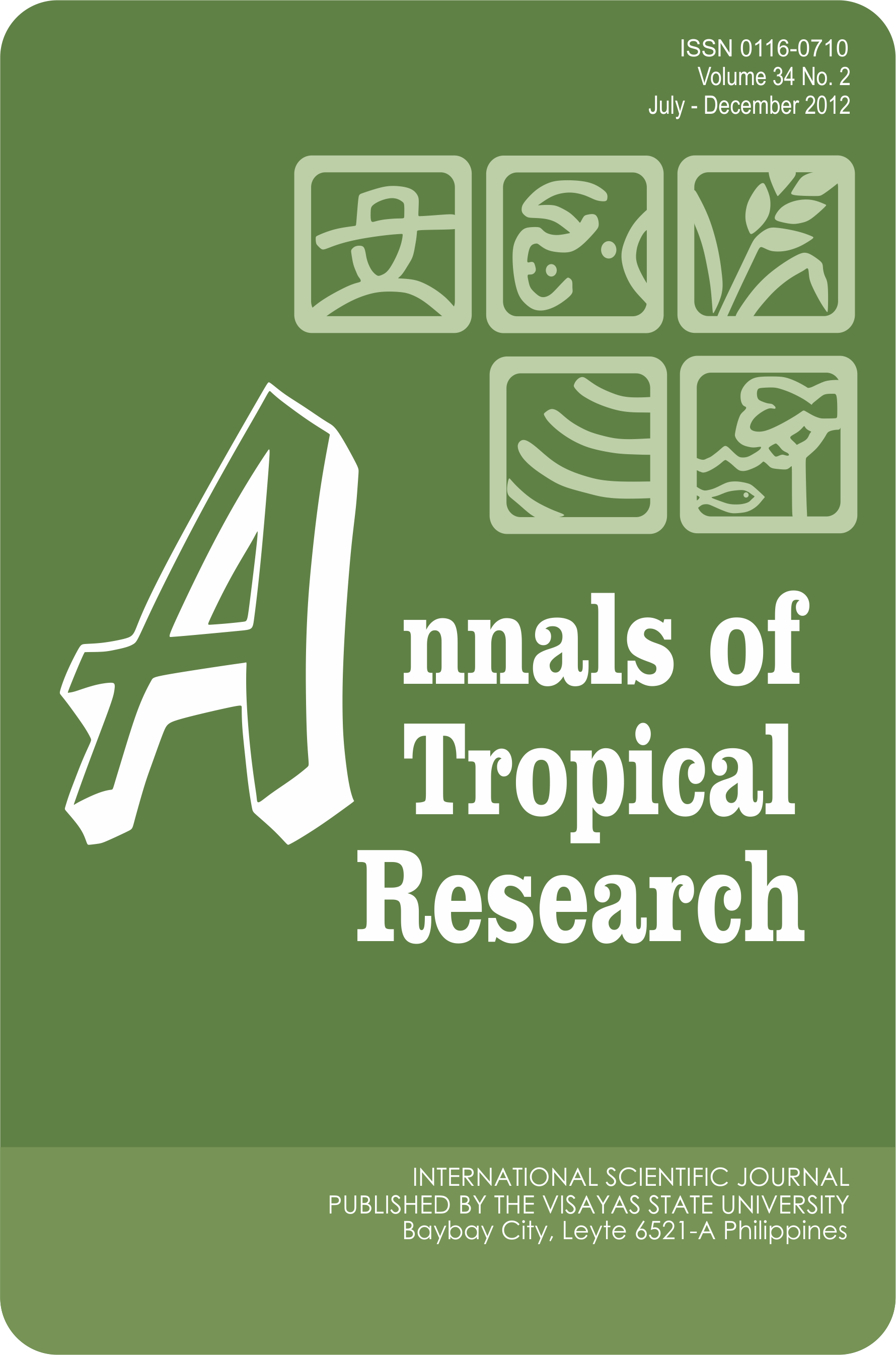Strong Sour Tamarind Flavor of Methyl-2,3,4-trihydroxyhexanoate, a new compound isolated from Leaves of Tamarindus indica, L. plays a role in plant defense mechanisms
DOI:
https://doi.org/10.32945/atr3422.2012Keywords:
Tamarind (Tamarindus indica L.), Tamarind flavor, Tamarind methanol fraction, Methyl 2,3,4-trihydroxyhexanoate, BiopesticideAbstract
Flavoring compounds of plants play a significant role in plant defense mechanism. Compound responsible for strong sour tamarind flavor has been isolated and identified from Methanol fraction of tamarind leaves (TrMF). Chromatographic and spectral analyses of TrMF revealed the compound to be methyl 2,3,4- trihydroxyhexanoate. This compound showed a strong antioxidant activity as well as strong antimicrobial activity. It showed significant antioxidant activity with Ic50 value of 2.5µg/ml whereas tert-butyl-1-hydroxytoluene and ascorbic acid revealed 26.0 µg/ml and 5.0 µg/ml, respectively. It also revealed strong inhibitory activity against Aspergellosis disease-causing fungi namely: Aspergillus fumigatus, Aspergillus tamarii and Aspergillus niger at all concentrations. Streptococcus aureus and Escherichia coli were much more sensitive to methyl-trihydroxy-hexanoate at all concentrations than Pseudomonas aeruginosa. This pure compound exhibited concentration dependent inhibitory and stimulatory activity on rice seeds germination and seedling growth. It showed strong inhibitory activity up to 62.5ppm concentration and below this concentration the effect was stimulatory. Methyl-trihydroxyhexanoate exhibited wide range of defensive activity against microbes and crop seeds and also possesses potent antioxidative activity. Thus play an important role in plant defense mechanism and can be utilized as a valuable source of bio-herbicides and pesticides.
Downloads
Submitted
Published
How to Cite
Issue
Section
License

This work is licensed under a Creative Commons Attribution-NonCommercial-ShareAlike 4.0 International License.











